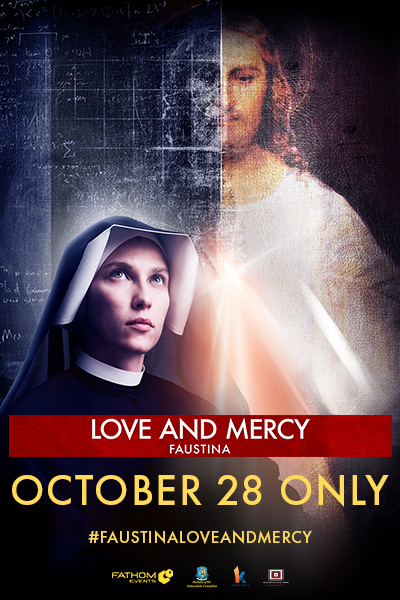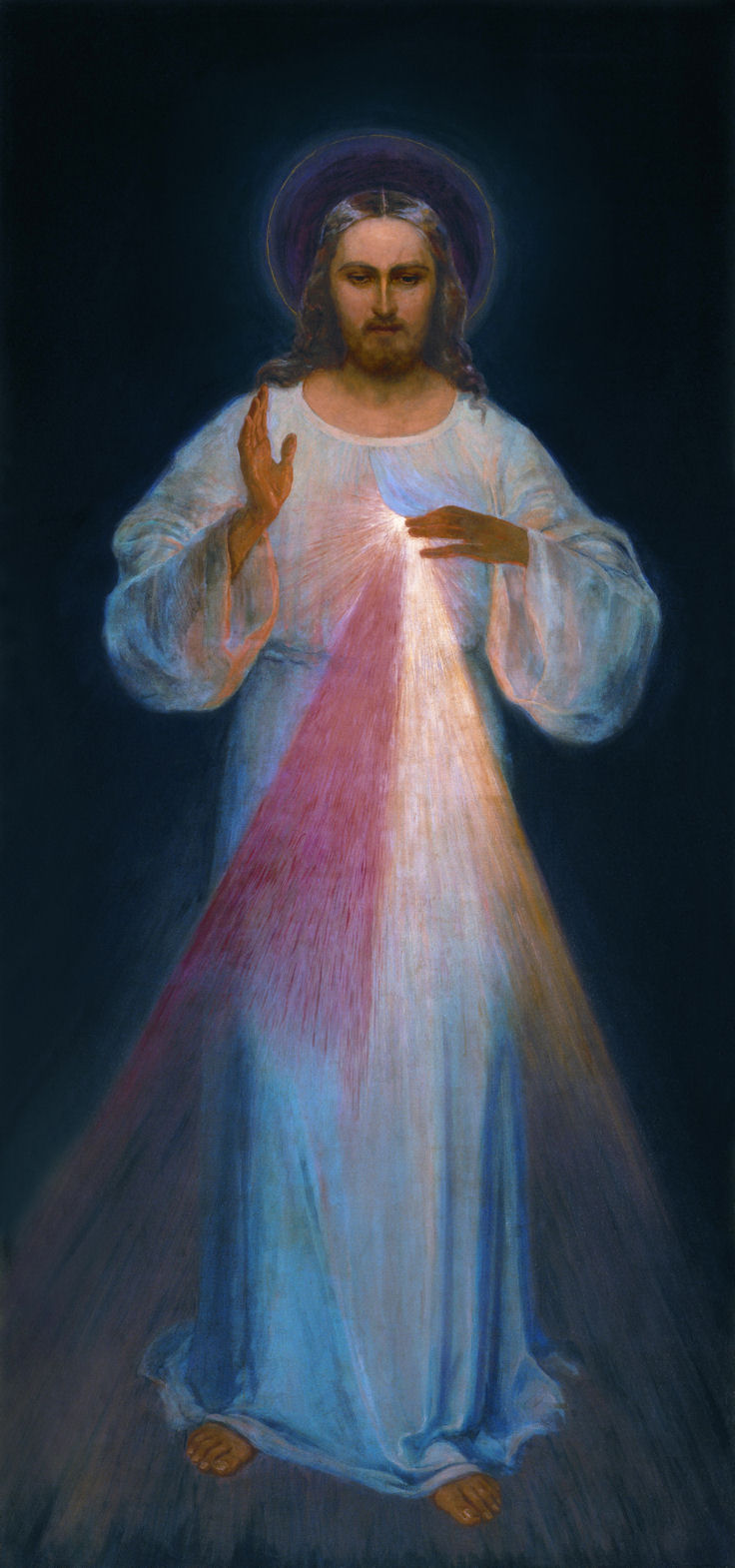It’s a remarkable thing that the visions of a 25-year-old Polish nun would, after years of suppression by the Vatican, become what is now a major feast day in the Catholic Church: Divine Mercy Sunday.
Sister Maria Faustyna Kowalska (born Helena Kowalska in 1905) was a nun of the Congregation of the Sisters of Our Lady of Mercy in Plock, Poland when she began receiving instructions from our Lord, including that she arrange for a painting of Him as she saw Him in her visions that would include the phrase “Jezu, ufam Tobie” (“Jesus, I trust in you”).
We might wish to know more about this woman, the feast she helped inspire (in 2020 it will fall on April 19), and the Divine Mercy chaplet and its promises. And now we can know, thanks to a new docudrama by director Michal Kondrat.
Love and Mercy is an odd but valuable film. I say this 90-minute movie is odd – that’s often true of docudramas (films that intermingle actors performing dramatic sequences with interviews of non-actor experts) – because the documentary scenes are unexceptional, although informative, and the dramatic reenactments of Faustina’s life are truly fine cinematic work.
The out-of-drama exposition, some of it by the estimable Fr. Joseph Roesch, has all the color of small-market TV news reading. The problem isn’t that the words are dull; it’s that, in contrast to the professional actors’ performances, the delivery of the expositors breaks the film’s dramatic spell.
But, please, see this film, because it explains why Divine Mercy Sunday and its chaplet are so important. Indeed, heaven is at stake.
Of St. Faustina’s story, this much you may already know: Helena Kowalska first entered a convent in Warsaw at age 20, was moved to Plock in 1930, and then northeast to Wilno (now Vilnius, Lithuania) in 1933.
It was in her room in Plock that Christ appeared to her on February 22, 1931. He said:
Paint an image according to the pattern you see, with the signature: “Jesus, I trust in You.” I desire that this image be venerated, first in your chapel, and then throughout the world. I promise that the soul who will venerate this image will not perish.

In Wilno, she met Fr. Michal Sopocko – now Blessed Sopocko – who became her confessor and spiritual director and who helped her work with a painter, Eugeniusz Kazimirowski, to create the now-famous Divine Mercy image Shown at the end of this column).
On that same February night in 1931, when our Lord asked Faustina to see to the creation of the painting, He also asked that the image be “solemnly blessed on the first Sunday after Easter; that Sunday is to be the Feast of Mercy.” Bl. Sopocko and St. Faustina were together at the first (unsanctioned) “celebration” of Divine Mercy Sunday in Wilno on April 28, 1935 at which Kazimirowski’s painting was displayed.
Soon after, illness caused Faustina to be sent back to Warsaw, where she died on October 5, 1938. She was just 33.
One might suppose that the ascendancy of Divine Mercy spirituality was at that point unstoppable, but it most definitely was not. Although devotion had spread throughout Poland after World War II (which catastrophe Faustina had predicted) and came to the United States with Polish immigrants, Faustina and Divine Mercy had powerful opponents in Rome, not least Cardinal Alfredo Ottaviani, head of the Holy Office, who succeeded in suppressing the devotion until 1978.
The ban was lifted in no small part by the efforts of Faustina’s countryman, Karol Wojtyla, who as Pope John Paul II canonized Faustina on Divine Mercy Sunday, April 30, 2000 – a day St. John Paul called the “happiest of my life.” The great pope died on the eve of Divine Mercy Sunday 2005, was beatified by Benedict XVI on Divine Mercy Sunday 2011 and then canonized by Pope Francis on Divine Mercy Sunday 2014.
Love and Mercy features a luminous performance by Kamila Kaminska as St. Faustina. Miss Kaminska radiates innocence and vulnerability, wisdom and determination. As Bl. Sopocko, Maciej Malysa (who might be taken for American actor Andrew Garfield’s older brother) is every bit the rock the Polish priest must have been to the young woman who came to him to explain what she had been called to accomplish and Who had called her.
“Jesus told me you will be my confessor,” she tells the priest.
“Who told you?” he asks.
“Jesus.”
“. . . Jesus,” he repeats. “Are you sure?”
Later on in the film, as Faustina lies dying, she asks Fr. Sopocko for his blessing, which he gives. Then he asks her to bless him, which she does. It’s a tender, moving scene, and when the priest steps unsteadily into the hospital corridor, director Kondrat and his cinematographers (two are listed on IMDB) blur the film, and it’s hard at first to know if it’s their technique or your own eyes tearing.
The film’s trailer is available here.
The Divine Mercy chaplet should become a focus of that week after Easter, leading to Confession, and then the holy day itself. Let us be worthy of His promises!
_____
Love and Mercy has no MPAA rating at this point, but let’s call it PG. There are additional fine performances by Janusz Chabior as painter Kazimirowski and Dariusz Jakubowski as the future St. John Paul II.















